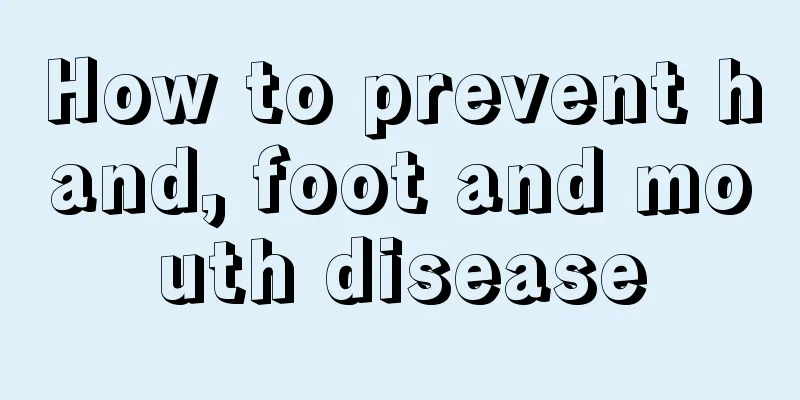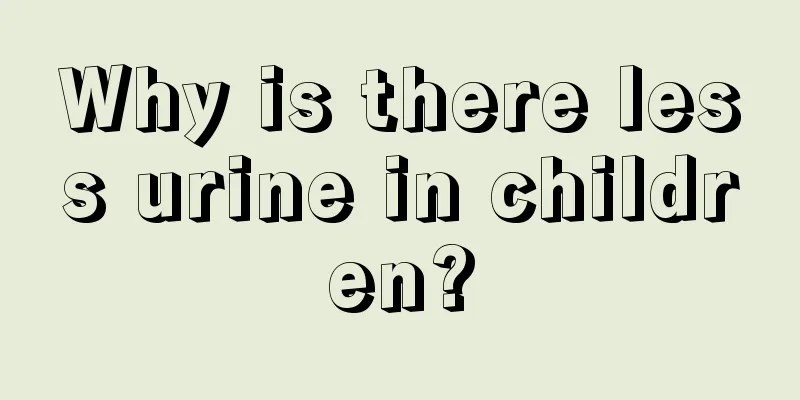Why is the baby's jaundice not going away even though he is one month old?

|
Jaundice is not a disease but a physical sign. Jaundice is divided into true jaundice and false jaundice. Generally, false jaundice is caused by yellowing of the skin due to eating too many carrots, tomatoes, pumpkins, etc., while true jaundice may be caused by too much bilirubin, decreased liver cell function or reduced number, etc.
This is because after a large number of red blood cells are destroyed (hemolysis), the formation of unconjugated bilirubin increases. A large amount of unconjugated bilirubin is transported to the liver, which will inevitably increase the burden on the liver (hepatocytes). When it exceeds the liver's ability to absorb and bind unconjugated bilirubin, the concentration of unconjugated bilirubin in the blood increases. In addition, the anemia caused by massive hemolysis puts the liver cells in a state of hypoxia and ischemia, and their ability to absorb and bind unconjugated bilirubin will inevitably be further reduced, resulting in an increase in the concentration of unconjugated bilirubin in the blood and the appearance of jaundice. 2. Decreased liver cell function or reduced amount of functional liver cells This is due to low liver enzyme function, or due to advanced cirrhosis, fulminant hepatitis, or liver failure, there are very few functional liver cells remaining in the liver, which cannot absorb unconjugated bilirubin in the blood, resulting in an increase in the concentration of unconjugated bilirubin in the blood and the appearance of jaundice. Physiological jaundice in newborns is also due to this reason.
In hepatitis patients, due to extensive damage to liver cells (degeneration, necrosis), the uptake and conjugation of unconjugated bilirubin by liver cells is impaired, so the concentration of unconjugated bilirubin in serum increases, while some undamaged liver cells can continue to take in and conjugate unconjugated bilirubin, converting it into conjugated bilirubin. However, some of the conjugated bilirubin cannot be excreted into the bile capillaries, but flows back into the hepatic lymph and blood through the gaps between necrotic liver cells, causing an increase in the concentration of conjugated bilirubin in serum and the appearance of jaundice. At this time, the patient's transaminase levels will often increase. 4. Intrahepatic cholestatic jaundice In some patients, the excretion of conjugated bilirubin is blocked due to hepatitis, such as degeneration and swelling of liver cells, inflammatory lesions in the portal areas, and bile thrombus formation in the capillaries and small bile ducts. As a result, conjugated bilirubin overflows through the small bile ducts (rupture occurs due to increased internal pressure in the small bile ducts) and flows back into the hepatic lymph flow and blood. In some patients, the excretion of conjugated bilirubin is blocked due to lesions of the bile ductules or small bile ducts themselves, bile plugs are formed in the small bile ducts, or structural abnormalities of the bile ductules. As a result, the conjugated bilirubin overflows through the small bile ducts (or the small bile ducts rupture due to increased internal pressure) and flows back into the hepatic lymph flow and blood. In some patients, the condition is not entirely caused by mechanical factors such as bile duct rupture (such as drug-induced cholestasis), but may also be due to reduced bile secretion (secretory dysfunction), increased permeability of the bile duct capillaries, bile concentration, and congestion, resulting in reduced flow, which ultimately leads to bile salt deposition in the bile duct and the formation of bile thrombus.
If obstruction or bile stasis occurs in any part of the intrahepatic or extrahepatic bile duct, common hepatic duct, common bile duct and ampulla of Vater, the pressure in the bile duct above the obstruction or stasis will continue to increase, and the bile duct will continue to expand, which will eventually lead to rupture of the small or micro bile ducts and capillary bile ducts in the liver, causing conjugated bilirubin to overflow from the ruptured bile duct and flow back into the blood, causing jaundice. |
<<: What is the common sense of caring for babies in the first three months?
>>: How to completely remove body odor in children
Recommend
What to do if your five-year-old baby is zinc deficient
The healthy physical development of children is w...
What should I do if my child with spleen deficiency has poor appetite and is prone to catching colds?
Spleen deficiency is a pathological phenomenon of...
Why is half of the child's face swollen?
Children are very magical creatures. They often h...
What should I do if my child has rhinitis?
After a child has rhinitis, parents should pay at...
How to improve children's memory
Children will encounter many problems during thei...
Why do children's teeth turn yellow?
We all know that having white teeth can make our ...
Why is the baby's stool green in two months?
Because every mother has different habits of rais...
Why does my five-year-old baby have stomachache?
Stomach pain is related to many factors. For exam...
How to treat a child's persistent cough
When parents take care of their children, what th...
What should I do if my three-month-old child has a fever of 38 degrees?
The hardest-working people in the world are paren...
Are mosquito repellent lamps harmful to babies?
Summer is a very sad day for babies. During this ...
Why does a one-year-old baby toss and turn when sleeping?
When babies are one year old, they already have a...
The child has herpetic pharyngitis
If a child develops herpetic pharyngitis, it will...
My baby is still jaundiced after 24 days.
If the baby continues to show symptoms of jaundic...
How to treat vulvitis in little girls?
When it comes to vaginitis, people generally thin...









